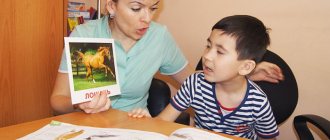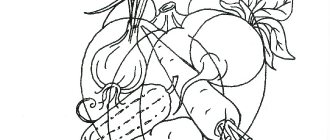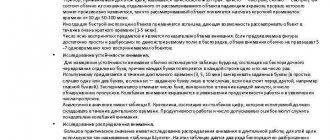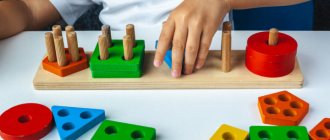Mnemonics for beginners is a system of various methods that helps to remember information using various associations and is used in teaching children from preschool age. This technique uses previously acquired knowledge to create a chain of connections. Thanks to such logical series, you can easily remember information that is difficult to perceive.
There are many mnemonic techniques. For example, Cicero’s method is based on spatial imagination, while Aivazovsky’s method works by training visual memory. Number sequences, foreign words or complex terms are easier to remember with the help of consonant or familiar words and numbers.
In a time when there was no written language, ancient priests and storytellers had to memorize enormous amounts of information. With the advent of the first texts put on paper, the art of using mnemonics did not lose its relevance, because the raw materials for writing them were very expensive. Even in Ancient Greece, notes were made using mnemonics. The art of associative memorization was mastered by the monks of the Middle Ages. At all times, people who could quickly remember and store useful and interesting knowledge in their heads were valued.
Definition
Mnemonics (mnemonics) is a list of methods and techniques that help remember various types of information.
Mnemonics is based on the principle of visualizing abstract objects, which are replaced by specific concepts or figurative definitions. To easily and quickly memorize the necessary information, you need to associatively associate it with some visual idea, sound image or sensation. Associations - establishing connections with known images and phenomena.
How to create a mnemonic table yourself?
When working with your little one, you can use both ready-made mnemonic tables and ones you make yourself. In order to make a table based on a poem or story, you need:
- Divide the text into fragments (the younger the child, the shorter).
- Draw squares on a piece of paper according to the number of text fragments.
- In each square, depict what is said in the fragment, or what is associated with it. A child of senior preschool age can independently draw pictures for the table.
- If you wish, you can sign the text in each square that you need to remember.
Mnemonics for children
Over the past few decades, this innovative direction in pedagogy and speech therapy has become popular. Kindergarten teachers began to pay more attention and time to speech development.
Classes are held in groups where children get acquainted with works of art, poetry, and fairy tales. It is especially useful to memorize poems and read them with expression. This trains memory, shapes speech, and enriches vocabulary.
Expressiveness of performance develops speech technique - diction, breathing. To do this, special exercises are carried out to help develop speech hearing and clear pronunciation of sounds and words. Also, the educational program of the preschool educational institution includes classes on mnemonics.
Mnemonic techniques
- Eidotehnika (eido - image) - representation of an object outside the zone of perception, i.e. application of imaginative thinking. The exercise is aimed at creating images, objects, and natural phenomena.
- Associative chain technique . Words are connected in order, one after another, without skipping. The result is a story or fairy tale. In this game, children quickly remember a chain of words.
- The Cicero method is the placement of information in space. The essence of the method is the imaginary placement of images in a specific place.
- Method of transformation (transformation). Exercise promotes the development of memory and logical thinking. The words seem to flow from one another, something unites them.
- Support method (numeric-letter method). Children remember information by associating the meaning of certain words, sounds and numbers.
- “Croqueting” technique (from the French word croquis - drawing, sketch). Method of graphic associations. The essence is to recode the information received when drawing objects and natural phenomena.
Mnemonic table, mnemonic square, mnemonic track, collage - these are the teaching tools of the crocheting method.
Mnemonic tables are images containing information. They reduce learning time and at the same time develop memory, attention, and creative thinking. Help transform abstract images into concrete objects.
A mnemonic square is a card with an image of encoded information.
Mnemonic track is a sequential distribution of mnemonic squares according to which the child composes a story.
Collages are aids that perform the following tasks:
- teach (thematic collages);
- remember;
- form the skill of attention distribution.
Kinds
If you plan to use mnemonics, keep one important point in mind. This is a whole science that has developed over several centuries. It has a rich history of development and there are many directions in it. In the same books dedicated to this art, they are often intertwined with each other. The authors offer sets of exercises, some of which relate to folk techniques, others to the classics. Such heterogeneity leads to the absence of a system.
Don't step on this rake. Choose one of the areas in accordance with your goals, objectives and individual characteristics and master it first. If things go well, then continue practicing using a different method.
Folk
The techniques of folk mnemonics are familiar to most people, as they have become firmly established in their lives, and many do not even suspect it. These are those rhymes with exceptions to the rules that they learned at school, the phrase about the hunter and the pheasant with the colors of the rainbow that set the teeth on edge. Road signs on the street, symbols on a computer desktop, the alphabet - these are all codes for developing memory in order to better remember and reproduce the necessary information faster.
Acrostic
Someone comes up with their own systems for learning a foreign language or chemical reactions, telephone numbers or significant dates - all this reflects the essence of everyday, or folk, mnemonics.
Classical
This is the very first system of mnemonics that has come down to us in written form. It dates back to 86 BC. e. At that time it was an integral part of rhetoric. Speakers used it to deliver long speeches accurately and without hesitation.
One of the most striking examples is Cicero's method. His opponent was Quintilian; he advocated for those people who had poorly developed visual and associative memory and who could not use Cicero’s technique. Quintilian proposed other alternatives to storing information, but was unable to formalize them into a separate system. However, it was they who later became the basis for the development of pedagogical mnemonics.
Pedagogical
The antipode of classical mnemonics. It finally took shape only in the 16th century, thanks to the Cambridge University teacher P. Ramus. This direction was closer to ordinary people, so it became widespread. There was no need to make complex visual associations here. Her main techniques were:
- repeated reading of the text and repeating it out loud;
- taking notes;
- redrawing illustrations;
- play activities;
- creation of didactics.
Methods of pedagogical mnemonics are still used in the modern education system.
Circus
The second name is variety. A narrow circle of people (it all started with circus troupes) creates its own system for coding the material. Anything can be used: language, gestures, facial expressions, intonation. The task is to transfer information from the assistant to the performer so cunningly that no one notices. These techniques are now actively used by scammers, telepaths, and psychics.
Sports
Since 1997, mnemonics competitions have been held annually in Cambridge. This direction has special specifics. Each participant is a guru in a specific area. Some reproduce binary numbers from memory, others recite poems 300 pages long by heart. As a rule, the winners end up in the Guinness Book of Records. The best in their field are determined by two indicators: memorization speed and volume.
Modern
The main representative of this direction is the Giordano mnemonic system. It is quite complex, based on scientific research in neurobiology about the brain and memory as a higher mental function. Here are just some of its provisions:
- development of electrical (neural) memory;
- mental operation “Connecting images”;
- the concepts of “Memorization Meaning” and “Accurate Information”;
- associations consisting of a foundation and auxiliary elements;
- system of internal stimulation of the cerebral hemispheres;
- multi-level schemes of reference images;
- constant training of memorization skills.
Mnemonic rule for remembering the number of days in a month using your knuckles
Don't remember what happened 5 minutes ago? Our short-term memory is to blame for this. What it is and ways to improve it is in our separate article.
Exercises for preschoolers
Preschool age is considered a favorable period for laying the foundations of competent, clear, beautiful speech. Mnemonics for beginners (simple, fun tasks, games) will help your child’s speech develop faster. It is useful for the development of the articulatory apparatus to perform tasks using onomatopoeic words. They correct diction well - pure jokes (“If only there was smoke coming out of the chimney”), nursery rhymes, phrases containing a certain group of sounds (“Sanya’s sleigh rides on its own”).
Exercises on the pronunciation of hissing sounds can be combined thematically.
After looking at the picture “Hedgehog and Hedgehogs,” the adult offers to complete a number of tasks. The child must clearly pronounce phrases with the sounds “sh” and “zh”. “Sha-sha-sha - we walk slowly; shu-shu-shu - I’ll give the baby a raspberry; shi-shi-shi - where the kids walk.” Such exercises help you master question intonation and develop a sense of rhythm.
By isolating the sound while clearly pronouncing a word, the skill of understanding the terminology “sound” and “word” is developed. When working with children, it is necessary to emphasize the development of intonation sense, rate of speech, diction, and strength of voice. Games can help with this.
Exercises for beginners:
- "Whose voice is this ? The goal of the game is for the child to learn to recognize adult animals from young animals by the reproduced sound. For such a game, you can take figurines of a dog and a puppy, a duck and a duckling, a cat and a kitten. Alternatively, you can sculpt animals from plasticine or use cards. The plot of the game: animals come to visit the baby, they want to play with him. Children should understand the difference between how a mother cat meows and how her baby meows.
- Game "Compare the cubes" . The task is to teach the child to correlate objects with different characteristics. An adult offers to look at two cubes and tell how they differ. The kid takes one cube and says that it is big, and the second cube is small. The first cube is red and the second is white. The red cube is plastic, the white cube is made of fabric and is soft inside.
- Game “Compare two kittens” . The child is asked to look at the kittens. One of them is white and large, and the second is black and smaller. You need to say who they are. Come up with names for them so that it is clear that one kitten is black and the other is white. What is the difference.
- Game “What little animals can do . The goal of the game is to choose verbs that denote the characteristic actions of animals. An adult shows pictures of animals, and the child must say what they can do or what they say. For example, a cat loves mice. She loves to meow. The dog loves to bark and eat bones, run and jump. The cockerel crows and loves to peck grains.
- Game "Profession" . Here you will need cards that depict people of different professions (pilot, hairdresser, doctor, cook). An adult asks who heals people. The kid must answer correctly. This is how the remaining cards are played.
- The game “Wizards” helps expand vocabulary, develops long-term memory and logical thinking. You will need cards with images of individual objects - a table, an apple, a door. The adult names several words, and the child must choose those cards that will help him remember the named words. He kind of “bewitches” them into these cards. Then the baby takes the cards and with their help remembers the named words. The game is aimed at understanding the logical connections between objects.
Regular playful activities help to awaken interest in words. The exercises prepare children for further independent compilation of narratives, stories, texts, and form connected speech.
Examples of practical application
Mnemonics are often used to memorize rules, formulas, and numerical values in various sciences. First of all, it's a great memory workout. Secondly, it is ideal for children to fully master the school curriculum in individual subjects. Those who were lucky enough to study with teachers familiar with these methods forever remembered the exception words in the Russian language, the Pythagorean theorem in geometry, and many other truths that ideally everyone should know by heart. If teachers do not have the skills to work with these techniques, parents can use them themselves to help their child learn.
Some of the most striking examples of mnemonic techniques in different academic disciplines will help you.
How to work with them. Almost all of them are based on the techniques of rhyming and consonance. So, all children need to do is memorize funny rhymes - and the rules themselves will be remembered almost for the rest of their lives. You'll see: they will read them to their grandchildren later.
Russian language
Mathematics
Other items
Similar techniques and methods of mnemonics exist for almost all academic disciplines and spheres of life:
- in music - to remember the sequence of notes;
- in traffic rules;
- in military affairs (formulas for hit accuracy taking into account side winds and target speed);
- in the transport sector (colors of navigation lights on board aircraft and ships);
- in telephony (numbers where numbers are replaced by letters corresponding to them on the telephone keypad).
Mnemonics are invaluable when learning a foreign language. It will make the task easier for schoolchildren, students, and adults. The OPSHACOM rule, for example, will make it much easier to understand and remember the canonical order of placing several adjectives before a noun in English.
Rules for conducting classes
The process of working and learning with children should be comfortable and beneficial.
- You need to start with simple tasks. First, you can look at cards with single images.
- You should not immediately overload your preschooler; he will quickly get tired and will not absorb the information. You can show no more than two mnemonic tables per day.
- All images of didactic material must be bright and colorful. Children quickly remember colorful images. The grass is green, the carrot is orange, the pine cone is brown, the sea is blue.
- It is worth changing the topic of the lesson every time, otherwise the child will lose interest. Today we are learning poetry. Tomorrow - a fairy tale, wild animals, etc.
- It is important that classes take place only in a playful way.
Mnemonics for schoolchildren
The modern student receives a huge amount of information on various disciplines every day. It is very difficult to remember the material received in such a volume. Mnemonics skills will help here, which make it possible to accumulate and retain information.
Mnemonics for memory development is a strong training of attention and thinking. The following techniques will help you remember the information received as much as possible:
- "Make up your own story" . How to remember a list of unrelated words? The simplest thing is to come up with a story. For example, vocabulary words starting with the letter “l”: – labyrinth – on the rides we got confused in the labyrinth; – laboratory - he secretly entered a secret laboratory; – lagoon – the blue lagoon sparkles with sunlight. Next, the student reads the resulting text and retells it. This way he remembers the right words.
- Association cards . This method of taking notes helps you remember what you read. The main topic is written in the center of the sheet, and then secondary topics branch off from it in different directions, like branches of a tree.
- Block diagram . This method helps to structure numbers, tables, symbols, and keywords. The arrows in the diagram indicate the relationship between various data.
- Another proven way to remember information is to try to rhyme it. It is necessary to compose several lines of the necessary information and rhyme them. This should create a short verse. Then repeat several times.
- BCC - alphanumeric code . The technique is used to encrypt numbers and digits into words.
Methods
Since mnemonics did not appear yesterday, it includes various techniques, each of which offers the use of its own methods of memorizing information and memory training. Beginners may find them too complicated. In fact, if you understand their algorithm and master at least one, it will greatly simplify your life. We bring to your attention some of the most famous mnemonic systems.
Alphanumeric alphabet
The abbreviated name is CBA. Author unknown.
A technique according to which each number is associated with a specific letter through visual or auditory association. There are clearly written alphabets that need to be memorized and put into practice. You can create your own.
Alphanumeric code
The abbreviated name is BCC. The author is V. Kozarenko, a well-known specialist in mnemonics, who has written many textbooks on it.
The system of memorization and memory development proposed by Kozarenko is similar to the previous one. But here, first you just need to memorize the correspondence between numbers and paired consonant letters without any associations, and then use them in life. His BCC looks like this:
- 0 — m/n;
- 1 - g/f;
- 2 - d/t;
- 3 - farm;
- 4 - h/sh;
- 5 — p/b;
- 6 - sh/l;
- 7 — s/z;
- 8 - v/f;
- 9 - r/ts.
How to use. For example, you keep track of your income and expenses, you spent 2,056 rubles in a store, and you need to remember it in order to record it at home. You come up with a word that has a consonant corresponding to each number, and make a sentence out of them. 2 - children, 0 - ice cream, 5 - ice cream, 6 - chocolate. The children ate ice cream, it was ice cream and chocolate. There is no need to set a goal to come up with something conscious and logical. The more unusual the phrase, the better it will be remembered.
Other methods are also used in mnemonics:
- Fractional Number Code (FNC) - for those who deal with mathematics.
- Development of visual memory through visual associations. For example, each line of a memorized poem (a number in a formula) is “nailed” on a particular house (or tree) on the way to work or to the store and is repeated every time you walk along it.
- Method of auxiliary objects: if you put your finger on the Moon, you can understand whether it is growing or aging, depending on the resulting letter (P or S).
- Development of sound memory: chants (for learning Morse code), rhymes (“One Hundred Chinese Surnames”, Perelman’s dialogue about circles for memorizing the number Pi).
There are a large number of memory systems in mnemonics. You need to choose what suits you. If you have nothing to do with mathematics, KDC and Perelman’s dialogue are of no use to you. Look for those techniques that are relevant specifically to your life. Also focus on your memory type. You can first begin to perfect the one that prevails in you, and then develop the one that is worse.










